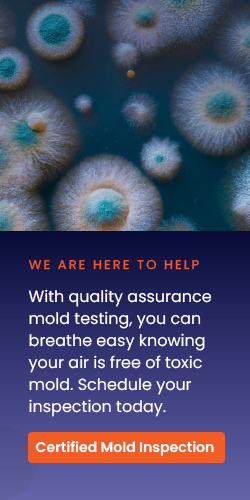4 Easy Facts About Amazinghazardremoval.com Mold Testing Fairfield Explained
Table of ContentsRumored Buzz on Amazinghazardremoval.com Mold Testing FairfieldAll about Amazinghazardremoval.com Mold Testing FairfieldExamine This Report on Amazinghazardremoval.com Mold Testing FairfieldExcitement About Amazinghazardremoval.com Mold Testing FairfieldSome Known Details About Amazinghazardremoval.com Mold Testing Fairfield Our Amazinghazardremoval.com Mold Testing Fairfield PDFs
Unless you're cautious, you may disrupt the mold and mildew growth and launch spores throughout your building. At Paul Sakson Environmental, we give expert mold and mildew screening and remediation services to domestic, business, and child treatment centers throughout New Jersey.With us, you will not need to lose rest over how your indoor air quality is impacting your enjoyed ones. To learn more, call us today!.
1.1 The function of this requirement is to offer standardized procedures to be utilized for a mold and mildew assessment. There are 2 kinds of mold inspections explained in the IAC2 Mold Examination Standards of Practice: (1) Total Mold Inspection (Section 2.0)( 2) Restricted Mold Inspection (Section 3.0) 1.2 Unless the examiner and customer consent to a constraint of the evaluation, the inspection will certainly be performed at the key building and connected car park structure.
1.3 A mold and mildew evaluation stands for the day of the evaluation and can not anticipate future mold growth. Because conditions for mold development in a building can vary considerably gradually, the results of a mold and mildew examination (examination and tasting) can just be trusted for the point in time at which the evaluation was conducted.
Little Known Questions About Amazinghazardremoval.com Mold Testing Fairfield.

The limited mold and mildew assessment does not include an aesthetic assessment of the whole structure, however is limited to a certain area of the structure recognized and explained by the examiner. Consequently, moisture breach, water damage, moldy smells, evident mold and mildew development, or conditions conducive to mold growth in various other areas of the building may not be evaluated.
The roofing drainage system, consisting of rain gutters and downspouts. The inspector is not needed to: A. Stroll on any roof surface. C. Perform a water test.
See This Report about Amazinghazardremoval.com Mold Testing Fairfield
The cladding, blinking and trim. B. Exterior doors, home windows, decks, stoops, steps, stairs, porches, barriers, eaves, soffits and fascias. C. The exterior grading surrounding the structure boundary. D. Items that permeate the exterior home siding or covering materials. II. The assessor is not needed to: A. Inspect underground drain systems. find B.
Inspect abandons not associated with mold and mildew development or dampness intrusion. 4.3 Cellar, Foundation, Crawlspace, and Framework I. The inspector shall check: A. The structure, cellar, or crawlspace including air flow. AmazingHazardRemoval.com Mold Testing Fairfield. B. For moisture intrusion II. The assessor is not needed to: A. Operate sump pumps with unattainable floats. B. Inspect for architectural issues not associated to mold and mildew growth or wetness invasion.
Some Known Details About Amazinghazardremoval.com Mold Testing Fairfield
The assessor will check: A. The air handler, flowing fan, and air filter. The inspector is not needed to: A. Examine the air conditioning coil if not conveniently accessible.
Inspect the condensate frying pan if not easily easily accessible. C. Test the performance or efficiency of the a/c system. D. Inspect the interior of ductwork system. 4.5 Pipes I. The examiner shall examine: A. The easily noticeable major water line. B. The readily noticeable water supply lines. C. The easily noticeable drainpipe, waste, and vent pipelines.
Hot water source. The examiner is not needed to: A. Examination the showers and Read Full Report bathtubs by filling them with waterB. C. Inspect for plumbing problems that are not connected to mold growth or wetness intrusion.
The assessor shall examine: A. Insulation. B. Ventilation of attic rooms. C. Framework and sheathing. II. The inspector is not needed to: A. To relocate, touch, or disturb insulation. B. Inspect for vapor retarders. C. Break or otherwise damage the surface area finish or climate seal on or around access panels and covers.
Amazinghazardremoval.com Mold Testing Fairfield Fundamentals Explained
The inspector will check: A. The walls, ceilings, floors, windows and doors. B. The air flow in the cooking area, bathrooms and laundry. C. Whole-house air flow fans II. The examiner is not needed to: A. Inspect for interior problems that are not associated with mold and mildew development or dampness invasion. 4.8 Dampness, Moisture, and Temperature Level I.

Samples of the interior air and the outdoors air must be considered contrast. There should not be any kind of mold and mildew inside your home that is not discovered outside. The concentration of mold and mildew inside a home must not be greater than the focus of mold and mildew outside. Mold spores in the air being tasted can vary considerably in relationship to the life cycle of the mold, climatic and ecological problems, and the amount of ventilation.
Things about Amazinghazardremoval.com Mold Testing Fairfield
Air sampling might look what i found be needed if the mold and mildew growth is thought (for instance, musty odors), yet can not be recognized by an aesthetic examination. The objective of such air tasting is to identify the location and/or degree of mold and mildew contamination along with a basic verification that mold and mildew development exists somewhere in the building.